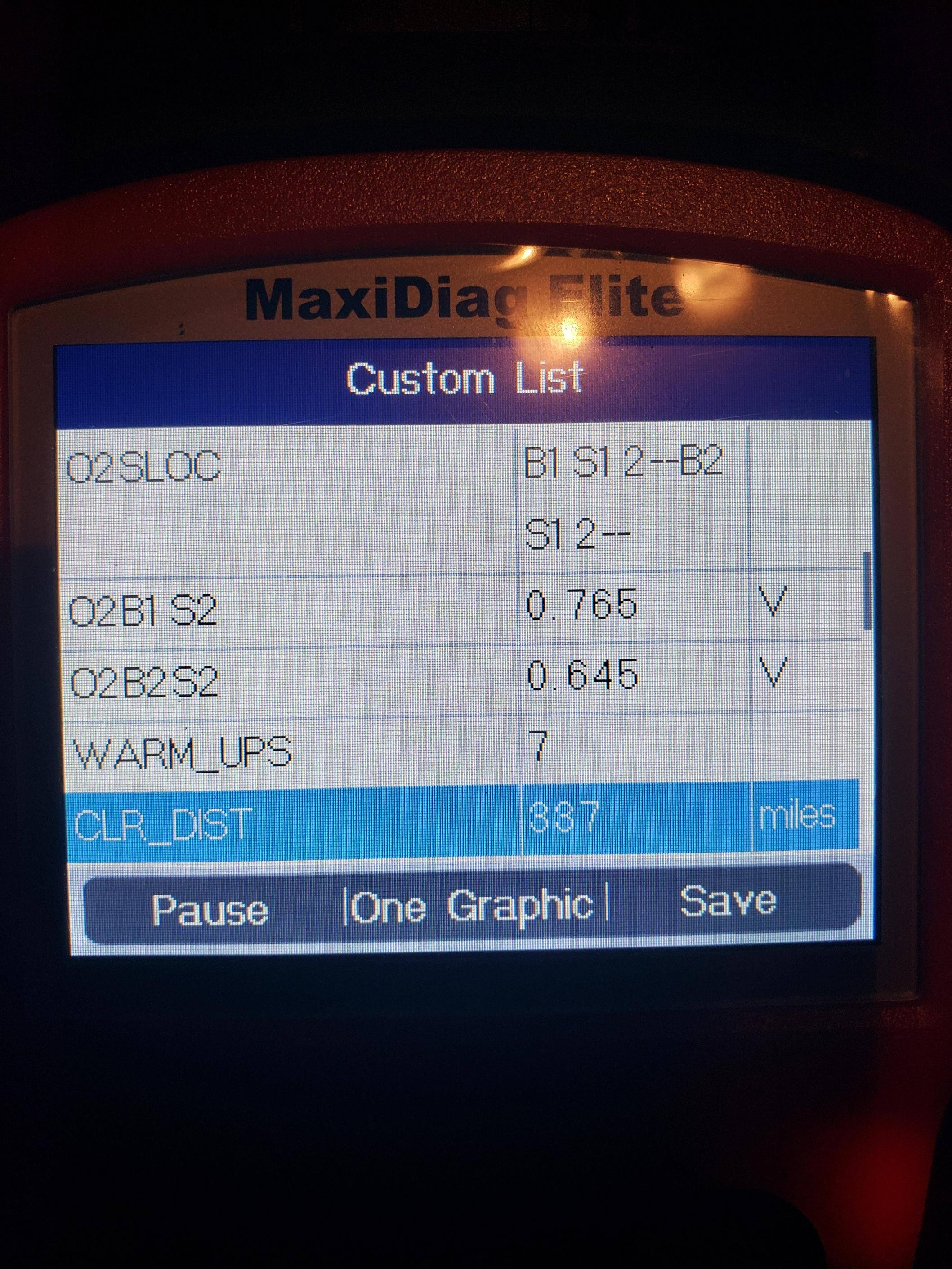OBDII monitor testing is a crucial part of ensuring your vehicle meets emission standards. For Ford owners, specifically those with models like the E350, encountering a “not ready” status during an emissions inspection can be frustrating. This situation often arises when certain onboard diagnostic system monitors haven’t completed their tests, preventing the vehicle from passing inspection, even when no obvious engine problems are present.
One Ford owner recently faced this exact predicament with their 2013 Ford Police Interceptor Utility, equipped with a 3.7L engine. Despite replacing all four oxygen sensors with genuine Ford parts and performing numerous drive cycles, the O2 sensors and O2 sensor heater monitors persistently showed as “INC” or “Not Ready” in IM readiness checks. This issue occurred despite the absence of a P1000 code or any other diagnostic trouble codes, including those related to catalytic converter efficiency (P0420 or P0430).
 Ford O2 sensor data on Autel scanner
Ford O2 sensor data on Autel scanner
The owner’s attempts to resolve the issue were extensive and included consultations with multiple repair shops, including a Ford dealership. They even tried a “force ready” mode, supposedly using a Ford IDS computer, and disconnecting the battery overnight, followed by more drive cycles. According to their Autel scanner, they completed ten warm-up cycles and drove nearly 400 miles specifically for drive cycle completion. Real-time data from the Autel scanner indicated normal voltage readings from the O2 sensors, and catalytic converter temperatures reached typical operating levels (around 950 degrees Fahrenheit at idle).
 Ford O2 sensor voltage readings
Ford O2 sensor voltage readings
Despite these efforts, the Ford Police Interceptor Utility continued to fail the emissions readiness test due to the O2 sensor monitor status. This highlights a common challenge: sometimes, simply performing generic drive cycles isn’t enough to reset the OBDII monitors to a “ready” state, even when there are no underlying mechanical faults.
For vehicles like Ford E-Series vans (including E350 models) and other Ford vehicles experiencing similar OBDII monitor readiness issues, consider these potential troubleshooting steps and factors:
-
Specific Drive Cycle Procedures: Ford vehicles often require very specific drive cycle procedures to set the monitors. Generic OBDII drive cycles might not be sufficient. Consult your Ford owner’s manual or a Ford service manual for the exact drive cycle recommended for your specific model and engine. Ensure you are precisely following the speed, acceleration, deceleration, and warm-up requirements.
-
Check for Technical Service Bulletins (TSBs): Ford may have released TSBs related to OBDII monitor setting issues for certain models or engine types. These TSBs may outline specific diagnostic procedures or software updates to address these problems. Consult a Ford dealership or online TSB databases.
-
Scan Tool Capabilities: While the owner in the original scenario used an Autel scanner, ensure your scan tool is capable of properly communicating with the Ford vehicle’s computer and accurately reading monitor status. Some generic scanners may not be as effective as professional-grade tools like the Ford IDS or equivalent advanced scan tools.
-
Underlying Intermittent Issues: Even without codes, there could be subtle intermittent sensor or system issues that prevent the monitors from setting. A more in-depth diagnostic process might be necessary to identify these elusive problems. This could involve scrutinizing sensor data under various driving conditions using a professional scan tool.
-
PCM/ECM Software Level: In rare cases, outdated PCM (Powertrain Control Module) or ECM (Engine Control Module) software could contribute to monitor setting problems. A Ford dealership can check for and perform any necessary software updates.
 Ford catalytic converter temperature data
Ford catalytic converter temperature data
Encountering “not ready” OBDII monitors, particularly for O2 sensors and heaters on Ford vehicles like the E350 or similar models, can be a complex issue. While replacing sensors and performing drive cycles are common first steps, a more systematic diagnostic approach, considering Ford-specific procedures and potential underlying issues, may be required to successfully pass emissions inspections. If you’ve exhausted basic troubleshooting, seeking assistance from a Ford specialist or a repair shop with expertise in Ford OBDII systems is highly recommended.
